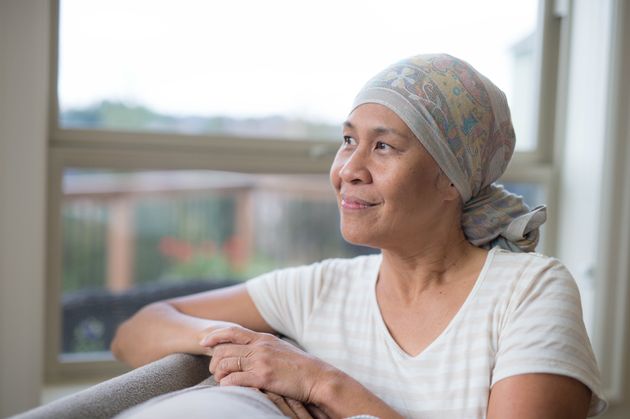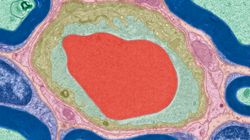Nearly one in four (24%) patients with secondary breast cancer had to visit their GP three or more times before eventually being diagnosed, a survey from Breast Cancer Now has revealed.
Secondary breast cancer occurs when cancer spreads from the breast to other areas of the body such as the bones, liver, lungs, skin or brain.
“Sometimes, cancer cells – that can’t be seen with the naked eye or scans – are left behind after initial treatment,” Sue Green, Macmillan Cancer Support senior nurse explained to HuffPost UK. “If this happens, the cancer may come back, sometimes even years later. Cancer that has come back in a different part of the body is known as metastatic or secondary cancer.”
While the disease can be treated and controlled for some time to help patients live well for as long as possible, it remains incurable.
If left untreated, secondary breast cancer continues to spread and symptoms are likely to worsen and have a greater impact on daily life.

Symptoms of secondary breast cancer
If you’ve had primary breast cancer, it’s important to be vigilant of any symptoms that are either new, don’t have an obvious cause or don’t go away. This is because they could signal that the cancer has returned and spread.
Breast Cancer Now’s survey found that just 13% of respondents who had had a prior diagnosis of primary breast cancer said they had been given enough information about the potential signs and symptoms of the return and spread of the disease.
It’s difficult to list all of the signs of secondary breast cancer as there are many, however some of the more common symptoms include:
:: Pain in your bones (for example in the back, hips or ribs) that doesn’t improve with pain relief or lasts for more than one to two weeks;
:: Unexplained weight loss and a loss of appetite;
:: Constant nausea;
:: Discomfort or swelling under the ribs or across the upper abdomen;
:: Feeling constantly tired;
:: A dry cough or a feeling of breathlessness;
:: Severe or ongoing headaches;
:: Altered vision or speech.
The symptoms of secondary breast cancer will depend on where in the body the cancer has spread to. For example, symptoms might include pain if the cancer has spread to the bones, or a cough or breathlessness if it has spread to the lungs.
Four in ten (41%) respondents who had spoken to a healthcare professional before being diagnosed with secondary breast cancer said they felt that their symptoms had not been taken seriously, according to Breast Cancer Now.
Treatment
To coincide with Breast Cancer Awareness Month, the charity is calling for improvements to support, treatment and care for those living with secondary breast cancer.
When breast cancer spreads to the bone, it can make it difficult to treat, according to Dr Alan Worsley, Cancer Research UK’s science communications officer. That said, there are treatment options available that can help slow the progress of the cancer and lower the chances of it spreading further.
Specialist teams will help to work out the best treatment options for each patient depending on the characteristics of their breast cancer, where and how far it has spread, the treatment they’ve already had and their general health.
Treatments they might be offered include hormone therapy, radiotherapy, chemotherapy, targeted therapy and surgery. Here is a brief breakdown of each treatment option:
Hormone Therapy
Oestrogen and progesterone can make some breast cancers grow faster. In cases like this, hormone therapy tablets such as tamoxifen and aromatase inhibitors (anastrozole, letrozole and exemestane) may help slow the cancer’s growth or spread. They work by blocking the production or action of these hormones on breast cancer cells.
In other cases, the ovaries can be treated to prevent them from producing hormones if you have not been through the menopause. This treatment type is called ovarian ablation.
Radiotherapy
This form of treatment can help slow the growth of secondary breast cancers and relieve symptoms.
Radiotherapy courses for secondary breast cancer are usually shorter than for primary breast cancer and some women experience milder side effects.
They are usually given at an outpatient clinic and require regular visits to hospital for a week or more, although they can sometimes be given as a single treatment.
Chemotherapy
Chemotherapy with one or more anti-cancer drugs may be used to treat secondary breast cancer, especially if hormone therapy is not working well or where tumours are in internal organs (such as the lung or liver).
Like radiotherapy, the treatment’s aim is to slow the growth of secondary tumours and to prevent them from spreading further.
Targeted Therapy
This form of therapy refers to drugs which attack breast cancer cells directly, helping to slow the growth and spread. Some targeted therapies can help relieve symptoms too.
One targeted therapy available on the NHS is called Herceptin. It works by attacking cancer cells that produce high levels of a protein called HER2 (known as HER2 positive breast cancers).
Surgery
This treatment type is not often used to treat secondary breast cancers. That said, it is sometimes possible for small tumours in operable areas to be removed.
The aim of treatment is to minimise spread and give patients the best possible quality of life.


